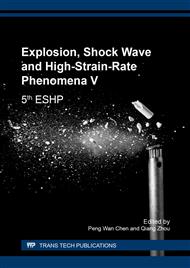[1]
Leyens C, Peters M. Titanium and titanium alloys[M]. Wiley-VCH, Weinheim, (2003).
Google Scholar
[2]
Miyazaki S, Kim H Y, Hosoda H. Development and characterization of Ni-free Ti-base shape memory and superelastic alloys[J]. Materials Science and Engineering: A, 2006, 438: 18-24.
DOI: 10.1016/j.msea.2006.02.054
Google Scholar
[3]
Boyer R R. An overview on the use of titanium in the aerospace industry[J]. Materials Science and Engineering: A, 1996, 213(1): 103-114.
Google Scholar
[4]
Boyer R R, Briggs R D. The use of β titanium alloys in the aerospace industry[J]. Journal of Materials Engineering and Performance, 2005, 14(6): 681-685.
DOI: 10.1361/105994905x75448
Google Scholar
[5]
Li C, Wu X, Chen J H, et al. Influence of α morphology and volume fraction on the stress-induced martensitic transformation in Ti–10V–2Fe–3Al[J]. Materials Science and Engineering: A, 2011, 528(18): 5854-5860.
DOI: 10.1016/j.msea.2011.03.107
Google Scholar
[6]
Bhattacharjee A, Bhargava S, Varma V K, et al. Effect of β grain size on stress induced martensitic transformation in β solution treated Ti–10V–2Fe–3Al alloy[J]. Scripta Materialia, 2005, 53(2): 195-200.
DOI: 10.1016/j.scriptamat.2005.03.039
Google Scholar
[7]
Meyers M A. Dynamic behavior of materials[M]. John wiley & sons, (1994).
Google Scholar
[8]
Xu Y, Zhang J, Bai Y, et al. Shear localization in dynamic deformation: microstructural evolution[J]. Metallurgical and Materials Transactions A, 2008, 39(4): 811-843.
DOI: 10.1007/s11661-007-9431-z
Google Scholar
[9]
Osovski S, Rittel D, Landau P, et al. Microstructural effects on adiabatic shear band formation[J]. Scripta Materialia, 2012, 66(1): 9-12.
DOI: 10.1016/j.scriptamat.2011.09.014
Google Scholar
[10]
Xu L. Metastable Beta Titanium Alloys: Tuning the Beta Phase Stability and Low-Temperature Martensitic Transformation of Metastable Beta Titanium Alloys[D]. TU Delft, Delft University of Technology, (2015).
DOI: 10.20868/upm.thesis.70158
Google Scholar
[11]
Qiang L, Yongbo X, Bassim M N. Dynamic mechanical properties in relation to adiabatic shear band formation in titanium alloy-Ti17[J]. Materials Science and Engineering: A, 2003, 358(1): 128-133.
DOI: 10.1016/s0921-5093(03)00292-2
Google Scholar
[12]
Borisova E A, Bochvar G A, Brun M Y. Metallography of Titanium Alloys[M]. Beijing: National Defense Industry Press, (1986).
Google Scholar
[13]
Nicholas T, Rajendran A M. Material characterization at high strain rates[J]. High Velocity Impact Dynamics, 1990: 127-296.
Google Scholar


